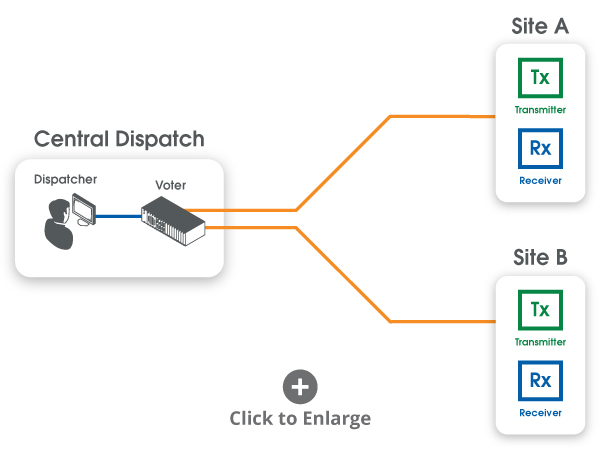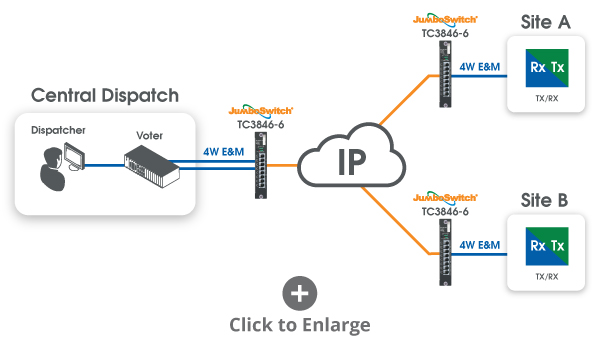Overview
While most of the analog two-way radio projects at TC Communications are done using our JumboSwitch® TC3846-6 (2/4W E&M) card, some customers have requested using V.24, which is a synchronous RS-232 standard most commonly used on the Motorola Quantar Repeater/Base station.
V.24 is applied in much the same way as copper leased lines are used, and the migration to an IP-based solution is done in the same manner.
V.24 Connections
To illustrate a typical connection of two-way radio equipment, see the diagram below:
In this simple example, two repeaters at locations A and B are connected back to the voter and dispatcher. This example also works with multiple receivers.
A standard way to connect this would be leased (phone) lines for connectivity. To replace leased lines, TC Communications would typically use the TC3846-6 4W E&M card as follows:
In this case, a single port at each site is connected to the repeaters, and then at the central site, a single card with two ports connected to the voter.
When the same application is done using the V.24 synchronous serial interface instead (such as when using Motorola Quantar repeaters), TC Communications would use a different card, the TC3847-3.
The TC3847-3 provides RS-232, RS-422, and RS-485 compliance, and in this application, two channels are combined to provide a V.24-compatible link suitable for radio connectivity.
V.24 is most typically used for the Motorola Quantar Repeater/Base Stations, and using the application described earlier, the TC3847-3 can replace the TC3846-6 in the following diagram:
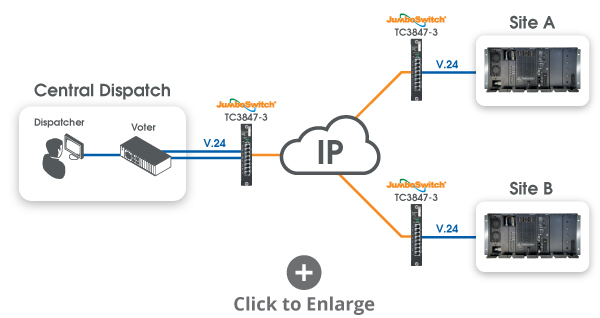
Because the TC3847-3 is part of the JumboSwitch family, setup is easy: Simply add the TC3847-3 at each site connected over an IP network, with one port connected to the equipment at sites A and B, and again with two ports connected to the voter at the central dispatch site. If the application requires additional ports, more cards can always be used.
Additionally, as the serial communication is oversampled, the latency over the network typically only around 5 milliseconds, ensuring no delays in audio and an a consistently low overall latency.
A Real Application Example
A recent example of a deployed network utilized the following topology:
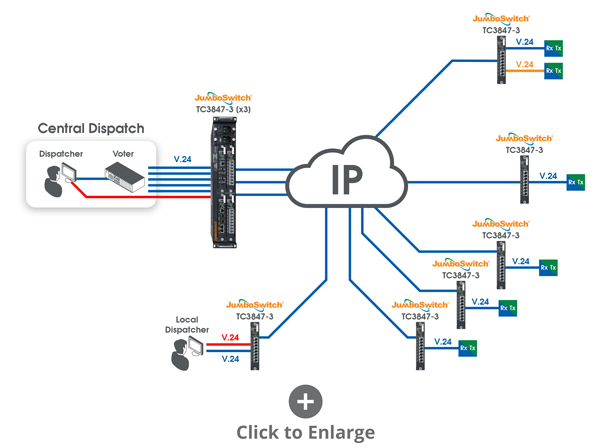
In this case, there were three main sub-systems:
1. 5-site voting system (shown in blue).
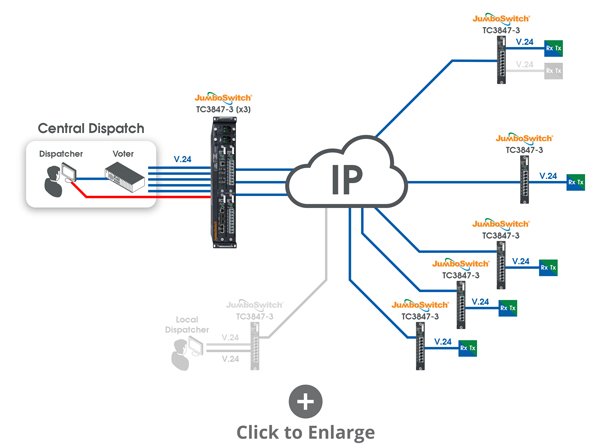
2. Local fire station repeater connected to a local dispatch (shown in orange).
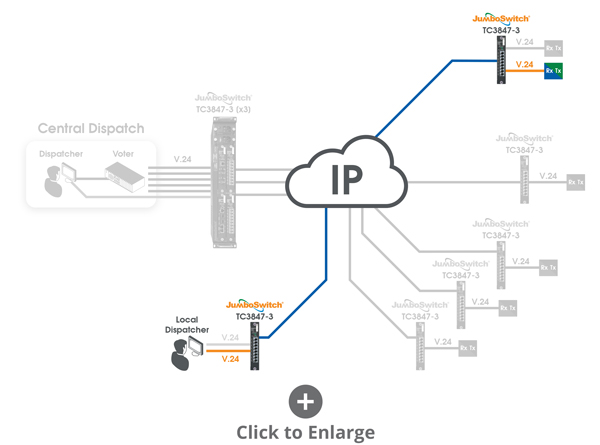
3. A single link between the main and local dispatchers (shown in red).
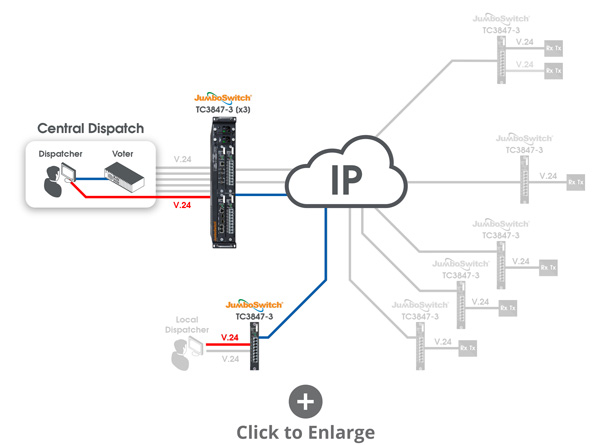
This example illustrates how simple the deployment is; it also shows at two points in the network how ports can be routed from one card to multiple locations—which significantly reduces the number of cards required in a system, compared to other solutions in which a card only communicates to one other card.
Key Benefits to This Solution:
- Ease of deployment using TC Communications' JumboSwitch
- Minimal latency (typically <5ms) for each link
- Card ports routing to multiple card locations, minimizing the number of cards required
TC3847-3 Key Features
- -20°C to +70°C temperature range; extended temperature (-40°C to 80°C) option available
- Standalone unit (most common) housing a single card and fully self-contained, which can be wall-mounted or placed on a tray; 1U rack option for rack-mounting
- For multiple cards, 2U rack holds up to three cards, while 4U rack holds up to seven cards (both options are rack-mountable)
- If even more cards are required, the flexibility of JumboSwitch allows for multiple chassis in a single application
- Dual power supplies and full functionality
For more information about the TC3847-3:
Related
Interested in similar content? Subscribe to our mailing list.
